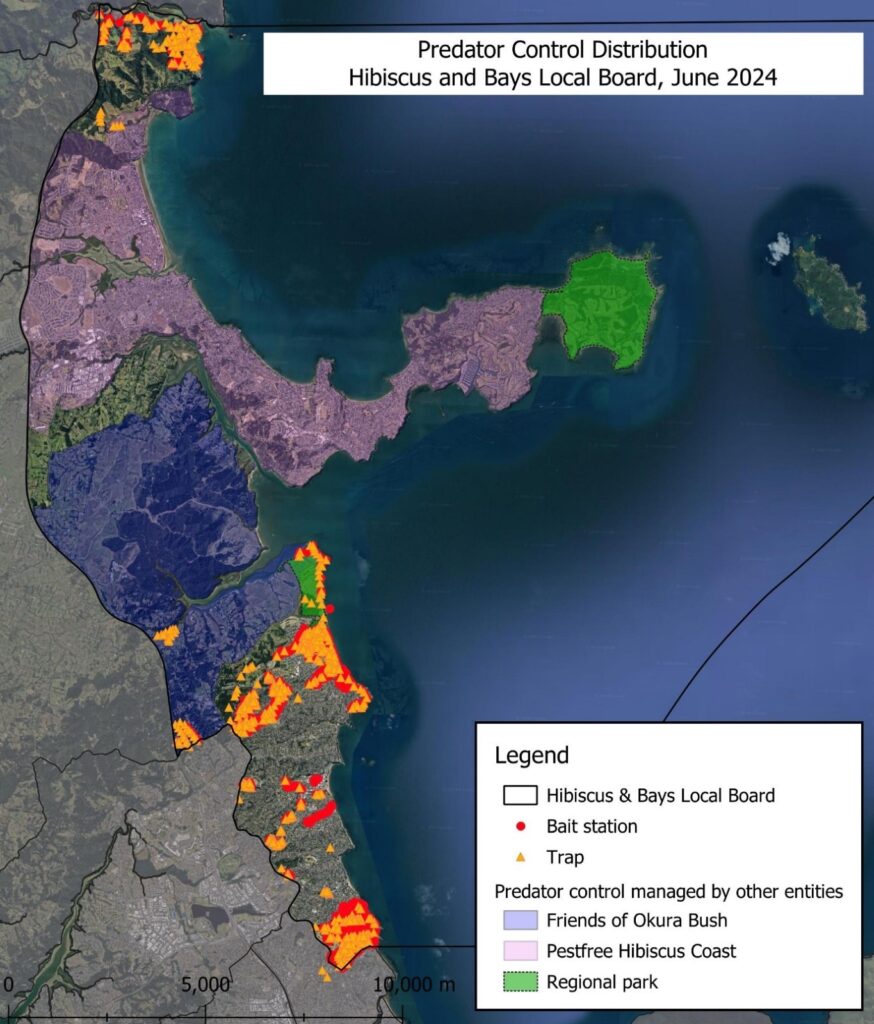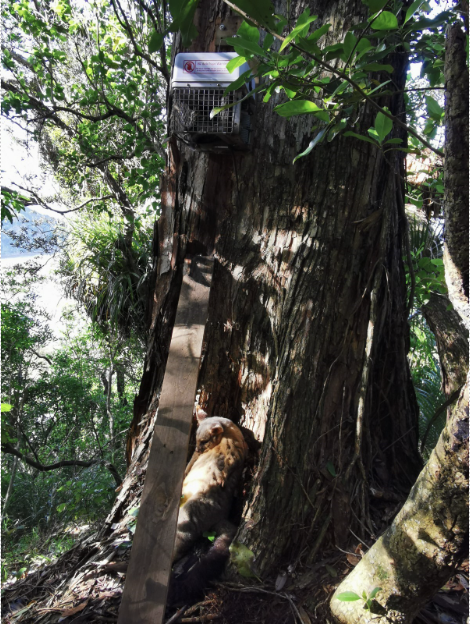Predator Control in Hibiscus and Bays – June update
The Bigger Picture of predator control in the Hibiscus and Bays
We want to extend our heartfelt thanks to all our predator control volunteers for your dedication and hard work in predator control. Your efforts are an essential part of a much larger initiative to protect and restore the biodiversity of the Hibiscus and Bays area. Together with our friends at Pest Free Hibiscus Coast and Friends of Okura Bush, we are achieving great coverage across the local board area. This collective effort is vital in creating a safer environment for our native wildlife to thrive.
In 2024 so far, your work has led to the removal of 466 rats, 144 possums, and 14 notoriously hard-to-catch mustelids from our environment. Moreover, many more predators have been removed from our ecosystems through our bait stations, further contributing to the protection of native species.
Due to our increasing distribution of traps, it is difficult to compare year-on-year results, but we are all doing an amazing job this year maintaining our trap network. We have already caught almost as many predators as we did in the entire calendar years of 2021 and 2022. This sustained effort will inevitably lead to the restoration of birdlife to our neighbourhoods. Your work is not just about setting traps and monitoring bait stations; it’s about being part of a larger movement to restore and protect our natural habitats. The success we are seeing with the resurgence of native birds, skinks, geckos and insects is a direct result of your efforts. Every trap set and every predator caught brings us one step closer to a healthier and more resilient ecosystem.
As we continue to expand our predator control efforts, we look forward to achieving even greater results together. Your role is crucial in this journey, and we are grateful for your continued support and commitment. Please get in touch with us if you want to join our predator control team.

AT220 along Vaughan Stream
At the beginning of this year, we deployed AT220 automatic rat and possum traps on private properties within the Vaughan catchment area, specifically along the Vaughan Stream edge. We chose this location due to the extensive stretch of SEA bush that follows the stream. Placing traps along the stream edge can be an effective method in targeting many of our pest predators because rats and possums frequently travel along waterways, using them as natural pathways through the catchment.
Currently, we have deployed nine AT220 traps. As we reach the six-month mark, we have collected impressive data: 160 catches, including 33 possums and 127 rats. These traps have proven to be a valuable asset in reducing pest numbers and protecting our native species, particularly in areas where regular maintenance of manual traps is challenging.
However, since these traps cannot be deployed everywhere, we always appreciate the help of more volunteers to support our predator control efforts. Volunteers can assist in maintaining predator control lines in parks and participate in our Awaruku backyard trapping project. Your involvement is crucial in continuing our mission to protect our native ecosystems.
Please email info@restorehb.org.nz to get in touch with to get involved with our predator control projects. We would love to have you onboard.
